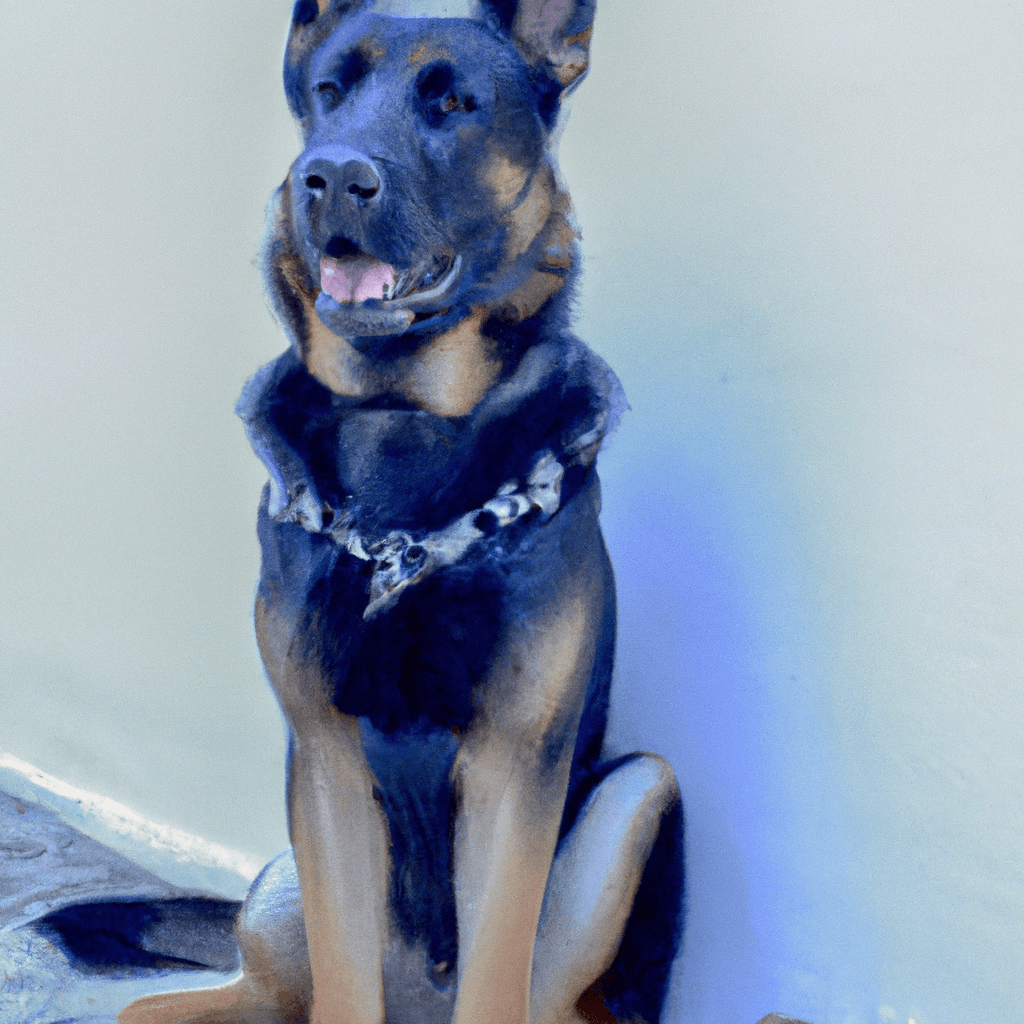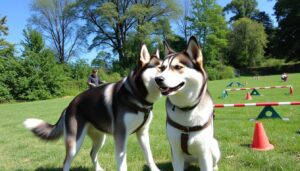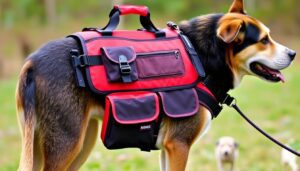How much does to train a guard dog?
Training a guard dog is an essential part of ensuring the safety of your home and family. Guard dogs provide an extra layer of security and can be trained to detect intruders, alert family members of potential danger, and even protect the property from thieves or other criminals.
With proper training and care, a guard dog can become an invaluable member of the family and an effective deterrent against crime. The amount of training needed for a guard dog depends on the breed and the individual dog’s temperament, but in general, guard dogs should receive a considerable amount of training in order to become reliable protectors. This training should focus on obedience, socialization, and protection behaviors.
Developing Realistic Training Goals for Guard Dogs
Training your guard dog is an important step in keeping your home and family safe. Establishing realistic training goals is a great way to ensure that your pup has the skills and obedience needed to protect your home. Here are some ideas to help you set the right goals for your guard dog:
- Establish basic commands. Start by teaching your pup simple commands like “sit,” “stay,” “down,” and “come.” These commands are the foundation for all other guard dog training and should be mastered first.
- Teach obedience. After the basics have been mastered, it’s time to work on obedience. This means teaching your pup to heel, walk on a loose leash, and respond to commands in any situation.
- Practice recall. The recall is the ability of a dog to respond to a command from a distance. This is an important skill for guard dogs, as they may need to respond to commands even when they are out of sight.
- Introduce distractions. As your pup masters the basics and obedience, introduce distractions in order to teach your pup to stay focused on commands even when there are other things going on.
- Practice protection work. Once your pup is trained in the basics and obedience, it’s time to start teaching protection work. This includes teaching your pup to bark on command, respond to threats, and stay in a guarded position.
Training a guard dog requires patience and dedication. By setting realistic goals and sticking to a consistent training plan, you can ensure that your pup has the skills and obedience needed to protect your home and family.
The Benefits of Socializing a Guard Dog
Socializing a guard dog is an important step in ensuring that your pet is well-behaved and able to interact with other people and animals. Doing so can help create a safe, comfortable environment for everyone involved. Here are some of the benefits of socializing a guard dog:
- Reducing Aggression: Guard dogs are naturally protective and can become aggressive if they feel threatened. Socializing them can help reduce their aggression and make them more comfortable around strangers.
- Developing Confidence: Socializing a guard dog can help them develop confidence and trust in their owners. This can help them feel more secure and less anxious in new situations.
- Strengthening Bond: Socializing a guard dog can also help strengthen the bond between them and their owners. This will help them feel more connected and secure in their relationships.
- Improved Behavior: Socializing a guard dog can also help them develop better behavior. This can make them easier to handle in public and help them learn to behave appropriately. Overall, socializing a guard dogs is important for their wellbeing and the well-being of those around them.
It can help reduce aggression, develop confidence, strengthen the bond between them and their owner, and improve their behavior. Taking the time to socialize your guard dog is time well spent!
Balancing Discipline and Positive Reinforcement in Guard Dog Training
When it comes to guarding dog training, striking the perfect balance between discipline and positive reinforcement is key. Discipline should be used to help guide your dog in the right direction, while positive reinforcement can be used to encourage and reward good behavior. Here are a few tips for creating that balance:
- Set Clear Expectations: Before you can begin training your guard dog, it’s important to set clear expectations. Decide what behaviors you want your dog to perform, as well as what behaviors you want to discourage. This will help you create a firm foundation for your training sessions.
- Offer Positive Reinforcement: Positive reinforcement is an effective way to encourage good behavior in your guard dog. Praise your pup when they perform the behaviors you’ve asked for and reward them with treats when they do something right.
- Use Discipline When Necessary: When your pup fails to perform the behaviors you’ve asked of them, it’s important to use discipline in a positive manner. This could include verbal corrections or a light tap on the shoulder.
- Stick to a Routine: Consistency is key when it comes to guarding dog training. Establish a consistent routine for training sessions and stick to it. This will help your pup understand the expectations and respond appropriately.
By striking the right balance between discipline and positive reinforcement, you can help your guard dog become a well-trained pup. Just remember to be patient and consistent with your training sessions and you’ll be on the right path to success.
The Pros and Cons of Clicker Training a Guard Dog
Clicker training is a popular form of positive reinforcement training that has been used for years to train guard dogs. It is based on the principles of operant conditioning and is a great way to provide consistent and effective training for any type of dog. However, there are pros and cons to using clicker training for a guard dog.
Pros:
- Consistent Reinforcement – Clicker training is a great way to provide consistent reinforcement to guard dogs. With each click, the dog knows they’ve done something correctly and will be rewarded. This helps to reinforce the desired behavior and makes training a guard dog much easier.
- Positive Reinforcement – Clicker training relies on positive reinforcement rather than punishment, which helps to build a strong bond between the trainer and the dog. This can help to create a more trusting relationship and make it easier for the dog to learn commands.
- Easily Adaptable – Clicker training is an easily adaptable form of training, which makes it great for training guard dogs. As the dog learns new commands, the clicker can easily be used to reinforce the desired behavior and help the dog learn quickly.
Cons:
- Long Learning Curve – Clicker training can take longer to learn than other forms of training, as it requires a lot of patience and consistency from both the trainer and the dog. This can be difficult for some dogs, who may become frustrated if they don’t understand the clicker quickly.
- Requires Consistency – Clicker training requires consistency from the trainer, as it is important that the dog understands the clicker and the rewards associated with it. If the trainer is not consistent, the dog may become confused and the training may be less effective.
- Can be Over-Reinforcing – Clicker training can be over-reinforcing if the trainer is not careful. If the dog is constantly being rewarded with treats and other rewards, it may become reliant on them and may not respond as well when not rewarded.
Overall, clicker training can be a great tool for training guard dogs, but it is important to consider the pros and cons before beginning. With consistency and patience, clicker training can be an effective way to train a guard dog, but it is important to make sure the trainer is aware of the potential drawbacks as well.
The Impact of Age on Guard Dog Training
Training guard dogs is a serious job, and it’s important to understand the impact of age on the training process. It’s critical to know when to start training a guard dog and how to tailor the training depending on the age of the dog.
Puppies are typically ready to start guard dog training when they are between six and eight weeks old. At this age, they are still very impressionable and can learn commands quickly. Start with basic commands, like sit and stay, and then move into more complex commands, such as guarding a specific area or object.
It’s important to note that puppies can only handle short training sessions, so keep it fun and engaging. Young Dogs Once a dog reaches about one year of age, it can start to learn more complex tasks.
They are also more focused and have more energy than puppies, so training sessions can be longer. Focus on tasks such as recall, tracking, and guarding. Additionally, you can start to introduce protection training, such as barking and growling on command.
Adult Dogs Adult dogs are typically ready for more advanced training, such as protection work and tracking. They are more focused and have more stamina than younger dogs, so the training sessions can be longer and more intense.
It’s important to keep in mind that older dogs may be more set in their ways, so it may take them longer to learn new tasks. Senior Dogs Senior dogs are usually not suitable for guard dog training due to their decreased energy levels and declining health.
However, you can still teach them basic commands and introduce them to new environments. This can help keep their minds sharp and help them stay active. Overall, it’s important to take into account the age of the dog when training a guard dog.
Puppies learn quickly and need shorter training sessions, while older dogs may need more patience and time to learn new tasks. With the right approach and training, guard dogs of any age can be an asset to your security team.
Tips for Managing Guard Dog Energy Levels
- Exercise Daily: Exercise is one of the best ways to help manage your guard dog’s energy levels. Take your dog for a run or a walk each day to help them expend some of their energy and tire them out.
- Play Games: Playing games with your dog is a great way to manage their energy levels. Try playing fetch, tug-of-war, or hide-and-seek with your pup.
- Mental Stimulation: Providing your guard dog with mental stimulation is another great way to help manage their energy levels. Try teaching them new tricks or giving them puzzle toys to keep them engaged.
- Provide a Routine: Having a daily routine can help your pup stay on track and manage their energy levels. Make sure to give them regular meals, walks, playtime, and plenty of rest.
- Avoid Stressful Situations: Guard dogs can become easily stressed in certain environments or situations. Try to avoid taking your pup to places or events that may be too stimulating or chaotic.
- Monitor Diet: Make sure to feed your dog a balanced diet with plenty of protein and healthy fats. Monitor their calorie intake to ensure they are getting the right amount of food.
- Schedule Breaks: Make sure to give your guard dog plenty of breaks throughout the day. This can help them relax and stay calm. 8. Socialization: Socializing your guard dog with other dogs and people can help them stay calm and relaxed. Make sure to introduce them to new people and dogs in a controlled environment to avoid any potential stress or anxiety.
How to Help Your Guard Dog Overcome Fear and Anxiety
Fear and anxiety can be difficult for any pet to overcome, but it can be especially hard for guard dogs. As protectors of the home, guard dogs often seem unphased by anything, but that’s not always the case.
If your guard dog is suffering from fear or anxiety, there are a few things you can do to help them out. First, try to identify the source of their fear or anxiety. If it’s something like loud noises or unfamiliar people, you can start by desensitizing your dog to these triggers.
This can be done by introducing them to the trigger in a controlled environment, such as a quiet room or a park, and rewarding them with treats or positive reinforcement when they stay calm.
Second, make sure your guard dog is getting enough exercise. Exercise will help relieve stress and keep them from getting bored, which can be a source of anxiety. Taking your dog for regular walks, playing fetch with them, or taking them to the dog park will help them stay active and healthy.
Third, provide your guard dog with a safe space where they can go when they feel scared or anxious. This space should be quiet and away from the source of their fear or anxiety. It should be comfortable and stocked with their favorite toys and blankets.
Lastly, make sure you’re giving your guard dog the attention and affection they need. Spend quality time with them, give them treats, and show them that you love and appreciate them.
This will help them feel secure and less anxious. These tips can help your guard dog overcome their fear and anxiety. With patience and dedication, you can ensure that your guard dog is happy and healthy.
Understanding the Impact of Diet on Guard Dog Training
As any experienced guard dog trainer will tell you, the diet of the dog plays an important role in the success of their training. After all, guard dogs need to be alert and energetic at all times and the right diet can help them stay healthy and energized. But how exactly does diet impact guard dog training?
Let’s take a look! First, it’s important to consider the nutritional needs of the dog. A guard dog needs to stay at peak performance and have a diet that provides the right balance of carbohydrates, fats, and proteins.
This will ensure that they have the energy to stay focused and alert throughout the day, while also helping to provide the muscle tone and healthy coat that they need. Second, it’s important to consider the type of food that is used to fuel the guard dog.
High-protein diets are often seen as the best choice for guard dogs, as they provide them with enough energy to stay alert and focused. Additionally, these diets also help to maintain muscle mass and can help to keep bones and joints healthy.
Finally, it’s important to consider how the diet impacts the dog’s behavior. Dogs that are fed a high-protein diet are often more alert and active, which is important for guard dogs. The diet should also provide them with enough vitamins and minerals to support their immune system, as this helps to keep them healthy and alert.
In summary, the diet of a guard dog plays an important role in their training. By providing them with a balanced diet that supplies them with the right balance of carbohydrates, fats, and proteins, you can ensure that they stay alert and focused throughout the day.
Additionally, by providing them with a high-protein diet, you can help them maintain muscle mass and keep their bones and joints healthy. Finally, by providing them with the vitamins and minerals they need to support their immune system, you can help to keep them healthy and alert.
Training a guard dog is an important part of ensuring its effectiveness as a protector and companion. The amount of training a guard dog needs depends on the individual dog and its owner.
Generally, guard dogs should receive basic obedience training and regular socialization. They should also receive specific guard training, such as alerting their owners to potential threats, responding to commands, and staying in a designated area. Although guard dogs require more training than other dogs, the effort is well worth it for the safety and security they provide.




